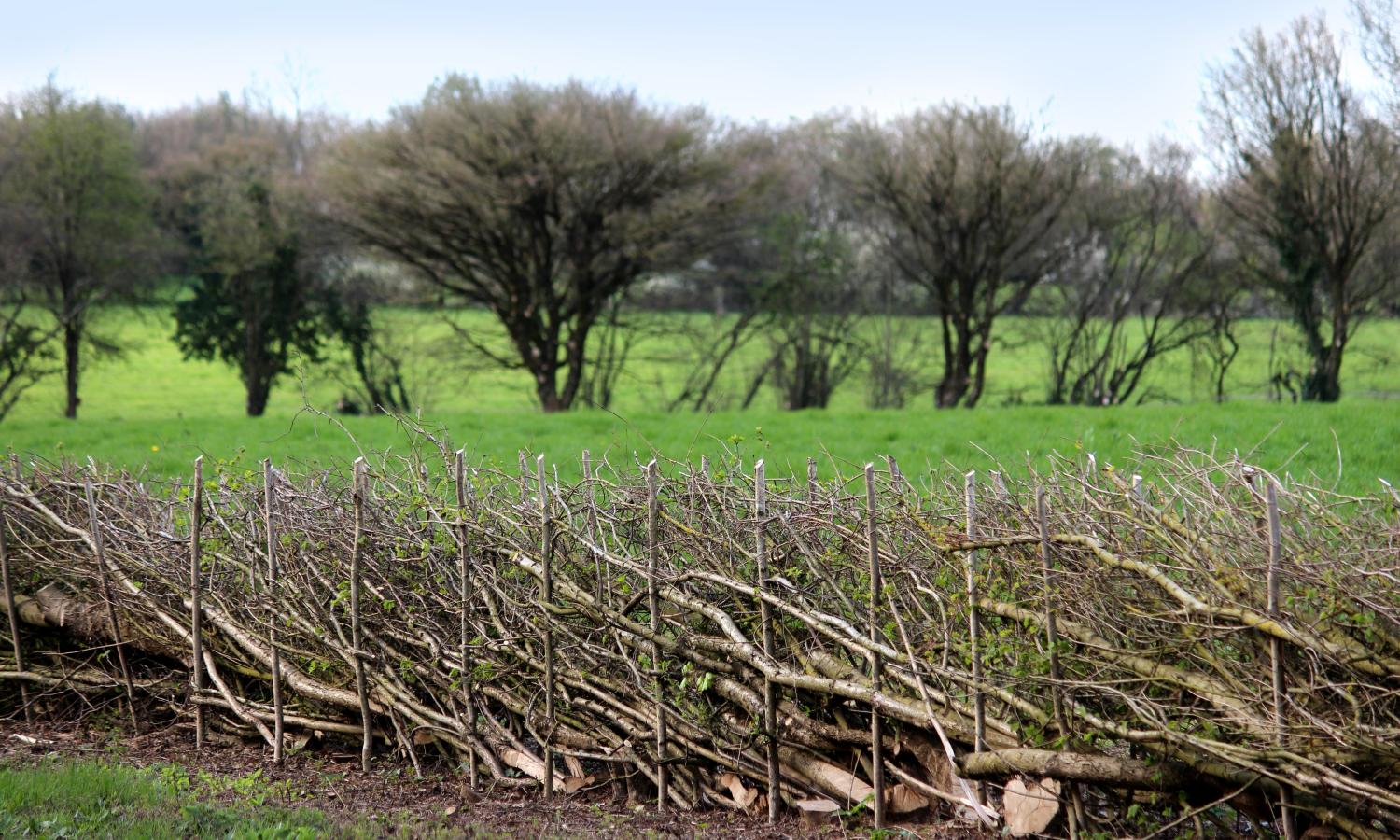The Nature Friendly Farming Network (NFFN) is an organisation led by farmers that offers support and advice on sustainable farming practices. Butterfly Conservation is proud to work alongside NFFN to deliver their mission – we are one of the partners of the NFFN advisory group, where we help by providing advice on policy issues and conservation management. Gabrielle Grant, Digital Communications Officer at Nature Friendly Farming Network, explains why hedges are vital to a thriving farm.
The sight of a rural British landscape, characterised by a patchwork of fields bordered by hedges, offers a comforting visual to many. But these hedges are more than just boundary lines – they play a pivotal role in improving farming’s resilience.
But why is the humble hedge central to a thriving farm?
These natural fences serve as climate change alleviators, windbreakers, biodiversity creators and assets to farm businesses. Their benefits are numerous, with each one contributing to a healthy and sustainable farm.
The evidence
Both academic research and first-hand accounts from farmers weave a compelling narrative about the invaluable benefits of hedges in agriculture, forming thriving landscapes across the UK.
Planting hedgerows on arable land can lead to an increase in yields and a decrease in inputs, according to research by CPRE. Their study showed that crop yields improved by 10% and pesticide use reduced by 30%. It calculated that for every £1 invested in hedgerows, farmers would see a £1.73 return from higher crop yields if the UK’s hedgerow network was expanded by 40% by 2050.
Research conducted by Mathews and colleagues (2006) suggests that farms embracing nature-friendly practices are associated with a lower risk of bovine tuberculosis (bTB) in cattle herds. Hedgerows, among other factors, play a crucial role in enhancing biosecurity, especially when there is a greater presence, width, and continuity of these hedges.
Hedgerow forage also contributes to the overall well-being and vitality of livestock. Tree browse (leaves, twigs and buds of woody plants) from different species can provide pain relief or help animals manage internal parasites. A study on three native deciduous tree species – Willow, Alder and Oak – involved the analysis of their mineral, energy, and protein content. The findings are helping to provide guidance for farmers to implement silvopastoral systems, fostering improved livestock performance and health, along with environmental benefits.
James Baird, an arable farmer from West Sussex, has seen firsthand the benefits of replanting hedgerows on his land. Not only has he saved a substantial amount of time and diesel by not cutting them as frequently, but he’s also been amazed by what else they can offer.
He says: "We had a particularly wet autumn and couldn’t get onto the fields. We had unprotected wheat growing away, aphids were on the wing, and we couldn’t do anything about it. By the following May/June, we started to see the symptoms of barley yellow dwarf virus (BYDV). However, next to the hedgerows, the fields were all bright green. There was no infection at all until about 12 metres out into the field. The beneficial predators had all come out of the hedgerows, it was astonishing. I had been sceptical about insects emerging from the hedge line and what they could provide, but this was a real awakening that hedges have a lot more to offer us.”
Abundant biodiversity
Well-managed yet low-maintenance hedgerows play a vital role in providing a haven for biodiversity, acting as ecological corridors that connect fragmented habitats and support a diverse range of plant and animal species. They offer food (nuts, berries, and flowers), shelter for invertebrates, mammals and birds, breeding sites for various insects, and a home to nesting birds and small mammals. Hedges are teeming with wildlife – a study by Wolton, R. (2015) discovered a count of 2,070 species within an 85-meter stretch of hedge in Devon.
Dave Oates, who farms at Rosuick in Cornwall sees the wonder that these centuries-old structures bring: "The Cornish hedge is an internationally recognized feature of incredible biodiversity and the oldest man-made structures in the world still used for their original purpose. As wildlife corridors, they are unmatched. The web of hedges in our local area is vast - and home to millions of different animals and thousands of different species.”
Combating climate change
The trees and shrubs that make up hedgerows act as natural windbreaks, providing a barrier against the elements and shelter for livestock. Their dense root systems and interwoven vegetation reduce water runoff and prevent soil erosion whilst supporting the fertility of adjacent agricultural land.
The linear and three-dimensional configuration of hedgerows makes them well-adapted to carbon sequestration. According to The Allerton Project’s Hedgerow Carbon Code, increasing both their height and width can result in a fourfold increase in stored carbon.
Championing the hedge
Promoting the growth of hedges and hedgerows is crucial for maintaining biodiversity and sustaining the delicate balance of our ecosystems. But it's not just about letting the hedge grow but nurturing it in a way that maximises its contribution to the farm.
Through all these functions, hedges help sustain the health and productivity of farmland and the wider environment. It is vitally important that they’re protected, as NFFN England stressed in its response to Defra’s consultation on the future of hedgerows, stating that preserving existing hedgerows is as important as cultivating new ones.
Gabrielle Grant
Digital Communications Officer, Nature Friendly Farming Network
Find out more about hedgerows and how important they are for butterflies and moths here.


